#heqat
Explore tagged Tumblr posts
Text
Heqat Rebirth Heka
Heqat is often viewed as a frog headed goddess who presides over birth (as well as rebirth). She sits with Khnum at His potters wheel, and breathes life into His creation. She is also present at birth, and acts as a midwife to the Netjeru.
In terms of rebirth and recreation, She is often tied to the resurrection of Wesir and the dead. She is there for us in death, just as She is at birth.
This heka focuses on the rebirth and recreation aspect, to have Her assistance in facilitating change and growth within our lives. When approaching Her to do this heka, I would recommend having a clear idea of what rebirth and change means to you, and how you wish for it to come in your life (whether it is in terms of personal, professional, or other matters).
As with all heka, I recommend cleansing yourself beforehand. Speak the words aloud, and allow your magic and strength to be behind each word.

The magician approaches their shrine with offerings and a glass of cool water. They call upon Heqat, and present the offerings while speaking aloud.
Words to be said:
"O' Heqat, Mistress of Creation, You who were present at my birth, I come to Thee as Thy beloved child!
O' Heqat, Great Mother, You who are constant in my life, I come to Thee for Thy assistance!
I have brought [name of offerings], May they please You, May they nourish You, May You hear my prayers now!"
The magician then focuses on rebirth and recreation. They pray to Heqat, touching on what they need assistance with, while praising and thanking Her for Her help in such matters.
They then take the glass of water, and hold it above or within the shrine.
Words to be said:
"From the waters of the Nun, creation was born. From the waters of the Nun, all is created. I too was created and born within the Nun, at the hand of Heqat.
She has brought me forth, born anew! She has brought me forth, in strength and prosperity! She leads me now, to my future! She leads me now, to my desires!"
The magician may now 'revert', or drink the water. The offerings may sit upon the shrine if nonperishable, or 'reverted' as well if a perishable food item.
#coyote resources#heka#kemetic#kemetic magic#kemetic witchcraft#spell#spells#spellcraft#witchcraft#heqat#heqet#heqat deity
19 notes
·
View notes
Text
Kemetic Gods
Regional Forms (Southwest US/Arizona) Part 3


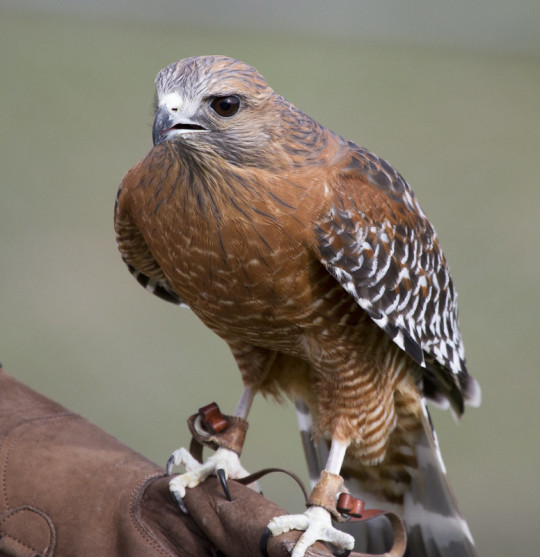

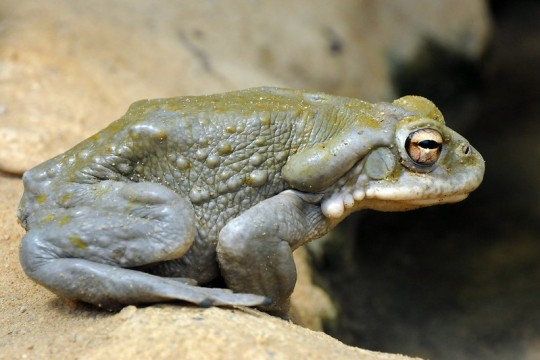
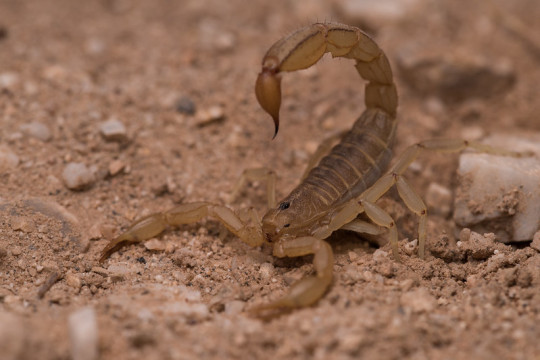
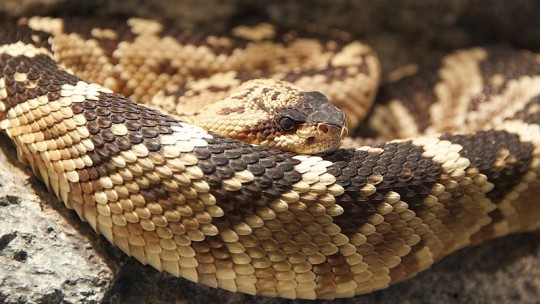
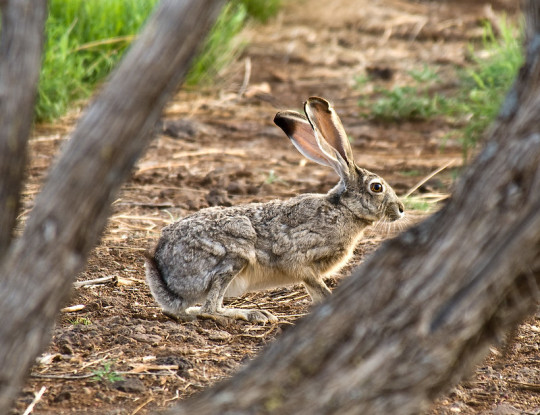

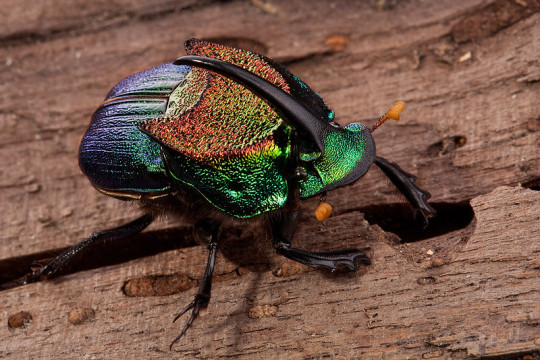
(Names in the alt text)
Part 1
Part 2
#kemetic orthodoxy#kemetic#kemeticism#diety worship#hethert#Khepera#wadjet#Heqat#Djehuty#montu#Nekhbet#Serqet#Wenut#sobek
36 notes
·
View notes
Text

Statue of Heqat, the Frog Goddess
During the Predynastic period statues of animals are much more common than those of humans. This statue of a frog stands at the beginning of a great tradition of animal sculpture in Egyptian art. The sculptor has shown great sensitivity to the natural banding of the stone, using it to enhance the roundness of the animal's form. Small frogs, mostly of faience, are among the most common votive offerings deposited at early temple sites. The frog's exact religious significance in the Predynastic period is unknown, but in later times it was most often identified with Heqat, the goddess who assisted at childbirth.
source
#found by kino#Statue of Heqat#the Frog Goddess#Predynastic Period#Late Naqada III Period#art history#frog#sculpture
24 notes
·
View notes
Text



When a woman mysteriously disappears in the peaceful town of Okwaho, the detective Kakashi Hatake sees everyone as a suspect. It's up to him to balance the search for the truth behind the continuously growing number of disappearances, his declining mental health, and his relationship with the city's chief journalist, Iruka Umino.
Okwaho - Chapter 1 - heqat - Naruto [Archive of Our Own]
69 notes
·
View notes
Text
I think there are multiple within the Kemetic Pantheon that could fall into that association. For me, the biggest would actually be Set, Aset, and Khnum because They are who I currently work with in that capacity for the most part. Perhaps Nefertem (+/- Shezmu and Ma’ahes), Renenutet, and Heqat could be looked into as well (won’t dive into my thoughts on Them however to keep the post manageable).
For Set, that association is because of His role as the Lord of the Oasis and Lord of the Desert. The desert is such a vast area, constantly changing and shifting from storms and winds. Yet there are still areas of significant growth, in the form of the oasis, where life flourishes and is nourished. There is much growth to be had when working with Him, and that growth can lead to change and transformation (as nothing can truly stay as it is forever).
For Aset, this is due to Her continued work alongside people. Especially during the later time period (even in Greco-Roman Egypt), She became someone who was worshipped and venerated by even the common people. For me, She takes on the role of a Mother and of a Teacher. She shows me the way to my own growth and change, while still allowing me the freedom to do it at my own pace (for the most part at least).
With Khnum, this is most likely due to His association with creation and growth itself. I like to think of humanity as the clay He works with. We are flexible and moldable, and change is simply in our nature. He can provide assistance (after all, the clay does not spin or work itself), but He also seems a bit more hands off at the same time. He understands that we are individuals and have different ideas and rates of change, and seeks to nourish that growth instead of controlling it.
Which deities do you personally associate with change/transformation?
#coyote speaks#just my upg of course… could go more in depth with traditional associations but! I hope this helps
103 notes
·
View notes
Text
Kemetic Blogs!!!
Hi!
I'm looking for more Kemetic and Witchy Blogs to follow, please Like or Reblog if you Post or Reblog about the following:
-Wadjet/Udjat
-Khonsu
-Set/Suketh
-Hethert/Hathor/Celestial Cow
-Sekhmet
-Heqat
-Ptah
-Mafdet
-Creation for the Gods
-Kemetic Polytheism
-Witchcraft Creation/Making Magic/Heka
Also in Non Kemetic Realm:
-Nordic Shamanism (Non-Terf/Non-Nazi)
-Sif or Freya Devotee.
-Hades and/or Persephone Devotee.
-Fey worker
-Death Magic worker
-Ancestor Worshipper
-Magic Resources.
I follow from @peachiree // I will NOT follow you if you are homophobic, islamophobic, Nazi/Nazi sympathizer, TERF, Racist, or any way against women's rights or a Trump supporter
#wadjet#khonsu#heqat#sekhmet#hethert#set#ptah#mafdet#sif#freya#frejya#Hades#Persephone#suketh#kemetic#norse paganism#norse gods#kemetic polytheism#kemetic paganism#Hellenistic#witch#magic#witchcraft
175 notes
·
View notes
Link

Heqet (Heqat, Heket) was a goddess of childbirth and fertility in Ancient Egypt. She was depicted as a frog, or a woman with the head of a frog. The meaning of her name is not certain, but possibly derived from the word “heqa” meaning “ruler” or “sceptre”. Frogs symbolised fruitfulness and new life, and it is thought that the her priestesses were trained midwives.
According to one tradition, she was the wife of Khnum, the creator god of Abu (Elephantine). He created each person on his potter’s wheel, and she breathed life into them before they were placed in their mother’s womb. Heqet and Khnum are depicted on Hatshepsut’s birth colonnade in her Mortuary Temple at Deir el Bahri. Heqet holds an ankh (symbolising life) to the infant Hatshepsut and her ka. According to another tradition, She was the wife of Heh and it was he who crafted each person before she brought life to them. Finally, she was sometimes considered to be the wife of Horus the elder, although as a form of Hathor she was also his mother.
Pregnant women wore amulets depicting Heqet for protection, and during the Middle Kingdom ritual ivory knives and clappers inscribed with her name were used to ward off evil during childbirth. She could also bring on labour and offer protection during labour. Heqet assisted in this manner in the deliverance of three fifth dynasty kings, according to a myth recorded in the Westcar papyrus in the Story of the birth of the three pharaohs which appears at the end of the tale of “Khufu and the Magicians”.
She was also involved in the resurrection of the deceased. In the pyramid texts she assists the pharaoh as he makes his way to the eternal stars sky and is depicted beneath the funeral beir of the deceased Osiris in Denderah. There was a Ptolemaic temple to Heqet at Qus, but only one pylon remains. There is also a reference to a temple at Her-wer in a tomb at Tuna el-Gebel, but so far this temple has not been found.
#heket#heqet#kemetism#kemetic#egyptian gods#heget#hegit#heqat#hekit#egyptian pantheon#egyptian#fertility#childbirth#midwife#protection#resurrection#life#frog
2 notes
·
View notes
Link
To the Egyptians, the frog was a symbol of life and fertility, since millions of them were born after the annual inundation of the Nile, which brought fertility to the otherwise barren lands. Consequently, in Egyptian mythology, there began to be a frog-goddess, who represented fertility, named Heqet (also Heqat, Hekit, Heket etc, more rarely Hegit, Heget etc.), written with the determinative frog.
Heqet was usually depicted as a frog, or a woman with a frog's head, or more rarely as a frog on the end of a phallus to explicitly indicate her association with fertility. She was often referred to as the wife of Khnum.
The beginning of her cult dates to the early dynastic period at least. Her name was part of the names of some high-born Second Dynasty individuals buried at Helwan and was mentioned on a stela of Wepemnofret and in the Pyramid Texts. Early frog statuettes are often thought to be depictions of her.
She was worshipped in the areas where the Ogdoad cosmogony had gained favour, and so, like most deities belonging to this world view, except for the eight members of the Ogdoad themselves, she was considered a child of Ra. After Ra became Atum-Ra, it was sometimes said that as the bringer of life to the newborn, she had to be the wife of Shu, who had fathered Nut and Geb, and his first wife was Tefnut.
Later, as a fertility goddess, associated explicitly with the last stages of the flooding of the Nile, and so with the germination of corn, she became associated with the final stages of childbirth. This association, which appears to have arisen during the Middle Kingdom, gained her the title She who hastens the birth.
Some claim that - even though no ancient Egyptian term for "midwife" is known for certain - midwives often called themselves the Servants of Heqet, and that her priestesses were trained in midwifery.
Women often wore amulets of her during childbirth, which depicted Heqet as a frog, sitting in a lotus. As goddess of the last stages of birth, she was considered the wife of Khnum, who formed the bodies of new children on his potter's wheel.
When the Legend of Osiris and Isis developed, it was said that it was Heqet who breathed life into the new body of Horus at birth, as she was the goddess of the last moments of birth. As the birth of Horus became more intimately associated with the resurrection of Osiris, so Heqet's role became one more closely associated with resurrection.
Eventually, this association lead to her amulets gaining the phrase I am the resurrection, and consequently the amulets were used by early Christians. Finally, as the legend of Osiris' resurrection grew increasingly stronger, she became ever more aligned with Isis, and eventually becoming an aspect of her.
#heqet#heket#kemetic#kemetism#Egyptian gods#history#dua heqet#frog mother#fertility#heqat#hekit#hegit#heget#i am the resurrection
2 notes
·
View notes
Photo




Egyptian Goddess Heqat Devotional Necklace
Black Agate, Green Aventurine, Gold Hematite, and Chrysocolla, with Gold-Colored Metal Spacer Beads, and a Silver and Prehnite Pendant
https://www.etsy.com/listing/1331666072/egyptian-goddess-heqat-heqet-hekat
#Kemetic#Heqat#Kemetic Fandom#Egyptian Goddess#Pagan#Heket#Heqet#Kemetic Jewelry#Devotional Jewelry#Prayer Beads#Rosary#Heqat Necklace#Heqat Beads#Kemetic Beads#Heqat Pendant#Goddess Heqat#Fertility Goddess#Mother Goddess#Divine Feminine#Pagan Jewelry#Egyptian Necklace#Goddess Necklace#Egyptian Jewelry#PaganEtsy#KemeticEtsy#Kemetic Orthodox
1 note
·
View note
Text
Hymn to Heqet
To Heqet, defender of home and kin, I offer my praise. O goddess of the rising waters, sprouter of seed, awakener of being, mistress of the fruitful field, mother of motherhood, mother of mothers, I honor your power, I honor your calling. Goddess of the birthing room, best of midwives, friend of women in their travail, you ease the pains of life entering the world, you grant each child. its first sweet breath outside the womb. Mighty Heqet, yours is the gift of a swift birth and a healthy babe, yours is the care of the newborn child and the house into which it is born, Preserver of the hearthfire, guardian of the gate, shield of the household and shelter of the family, Heqet who hears all prayers, watch over those within my walls, I pray to you.
117 notes
·
View notes
Text
Coyote’s Masterpost
Here’s a (somewhat) comprehensive list of all resource posts, spells, and more I’ve made throughout the years! Last updated 7/25/2024.
*posts with asterisks denotes a post that I made on my previous blogs.
Spirit Work Resources
Discernment in Religion and Spirit Work
Psychic Abilities, Communication, and Discernment Masterpost*
Beginning Spirit Work and Vetting (Ramble)
Banishing Masterpost*
Spirit Communication*
How I Begin Working with Netjeri (Non-human Kemetic Spirits)
Working with Animal Spirits
Astral Masterpost
Energy Work
Celestial Energy*
Heka
Cleansing and Banishing Ritual*
Simple Shower Cleansing Heka
Nehebkau Heka
Heka Against a Wayward Heart
Heqat Rebirth Heka
General Witchcraft and Spells
Simple Self Love Spell*
Stinging Jar Curse*
Tarot Spreads
Churning Water Spread
Weighing of the Heart Spread
Love is Blind Spread
Ladder of Success Spread*
#masterpost#spirit work#spirit communication#energy work#spell#spells#tarot spread#tarot spreads#coyote resources
172 notes
·
View notes
Photo








20 Ancient Tombs Discovered in Egypt
The tombs were found at a massive necropolis, used to bury the dead since nearly 2,500 years ago.
20 ancient tombs dating back to as early as 660 BC were uncovered in the city of New Damietta in Egypt's Nile delta, the country's Tourism Ministry announced on Monday.
The tombs, made of simple pits and mud bricks, were discovered at the Tell El Deir archaeological site. The Tell El Deir site is a massive necropolis, used to bury the dead throughout different eras of history, starting with the 26th Dynasty and through the Greek, Roman and Byzantine eras.
Mostafa Waziri, secretary-general of the Supreme Council of Antiquities, noted that the findings provide an important scientific and archaeological discovery for the history of the area.
Golden chips used to cover the remains were found in the tombs as well, in the forms of the Egyptian deities Isis, Heqat and Bastet, as well as in the form of the eye of Horus and Horus in the form of a falcon.
A range of different funerary amulets, including scarabs, the two feathers of Amun and a number of deities, were found in the tombs as well. Miniature models of canopic vessels used to hold the organs of the dead and statues of the four sons of Horus were also found in the tombs.
Ayman Ashmawy, head of the Egyptian antiquities sector at Egypt's Supreme Council of Antiquities, said that the tombs may date back to the 26th Dynasty, as the style of the tombs and the objects found inside them were common in that era.
Reda Salih, the director of the Damietta Antiquities District, noted that the archaeological mission working at the site is continuing its efforts as there are still many layers of sand to uncover at the necropolis.
Previous discoveries at Tell El Deir
In previous years, the mission found the tombs of other civilizations present in Egypt throughout history, including the Greeks and Romans, at the Tell El Deir site.
In 2019, archaeologists working at the site found gold coins from the Byzantine era and ushabti funerary figurines bearing the royal seal of Psamtik II, a pharaoh of the 26th Dynasty.
The figurines included amulets of scarabs, the eye of Horus, the knot of Isis (tyet) and deities such as Isis, Nephthys, Taweret and Horus. Archaeologists have also discovered limestone coffins, some of which depicted the faces of the deceased, at the site in the past.
The discovery comes just over a month after archaeologists found a tunnel which may lead to the lost tomb of the Egyptian Queen Cleopatra at the Taposiris Magna Temple, west of Alexandria in Egypt.
#20 Ancient Tombs Discovered in Egypt#New Damietta#Tell El Deir#ancient tomb#ancient grave#ancient necropolis#ancient artifacts#archeology#archeolgst#history#history news#ancient culture#ancient civilizations#ancient egypt#egyptian history#26th dynasty
21 notes
·
View notes
Text

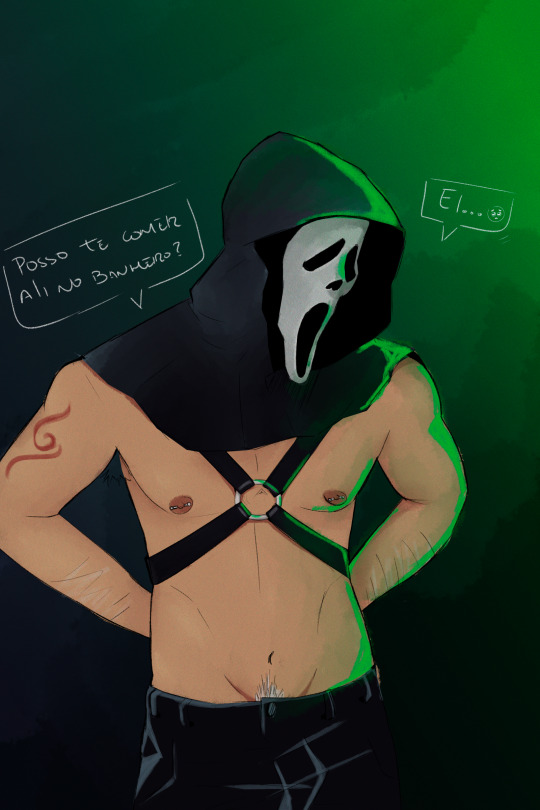
Kakashi couldn't have asked for a better friend than Obito. Similarly, he couldn't help but desire Obito's younger brother, Iruka. He would have loved to have both, if Obito hadn't made it clear that no one could lay a finger on his little brother. For many years, this duality of desires continued in secret. Kakashi pretended not to have no interest in Iruka, ignoring every single dirty thought, and at the same time he stood by, watching, patiently waiting for an opportunity.
What he didn't expect was that this chance would arise unexpectedly, during a Halloween party. Obito had been adamant that Kakashi couldn't pursue his brother, but he had never accounted for extraordinary situations, like when he’s wearing a mask, and the embodiment of temptation returns after a year, dressed as an angel.
For this plan to work, the mask had to cease being an accessory and transform into an identity. With it, Kakashi became Ghostface, and with it, all barriers vanished. Thus, a pursuit began, one where the outcome rested solely on the will of Iruka, the far-from-innocent, overprotected younger brother.
Because when you're being followed, there are only two options left: to scream or to seize the opportunity.
23 notes
·
View notes
Text
The Negative Confession (also known as The Declaration of Innocence or the 42 principles of Maat)
1. Hail, Usekh-nemmt, who comest forth from Anu, I have not committed sin.
2. Hail, Hept-khet, who comest forth from Kher-aha, I have not committed robbery with violence.
3. Hail, Fenti, who comest forth from Khemenu, I have not stolen.
4. Hail, Am-khaibit, who comest forth from Qernet, I have not slain men and women.
5. Hail, Neha-her, who comest forth from Rasta, I have not stolen grain.
6. Hail, Ruruti, who comest forth from Heaven, I have not purloined offerings.
7. Hail, Arfi-em-khet, who comest forth from Suat, I have not stolen the property of God.
8. Hail, Neba, who comest and goest, I have not uttered lies.
9. Hail, Set-qesu, who comest forth from Hensu, I have not carried away food.
10. Hail, Utu-nesert, who comest forth from Het-ka-Ptah, I have not uttered curses.
11. Hail, Qerrti, who comest forth from Amentet, I have not committed adultery.
12. Hail, Hraf-haf, who comest forth from thy cavern, I have made none to weep.

13. Hail, Basti, who comest forth from Bast, I have not eaten the heart.
14. Hail, Ta-retiu, who comest forth from the night, I have not attacked any man.
15. Hail, Unem-snef, who comest forth from the execution chamber, I am not a man of deceit.
16. Hail, Unem-besek, who comest forth from Mabit, I have not stolen cultivated land.
17. Hail, Neb-Maat, who comest forth from Maati, I have not been an eavesdropper.
18. Hail, Tenemiu, who comest forth from Bast, I have not slandered anyone.
19. Hail, Sertiu, who comest forth from Anu, I have not been angry without just cause.
20. Hail, Tutu, who comest forth from Ati, I have not debauched the wife of any man.
21. Hail, Uamenti, who comest forth from the Khebt chamber, I have not debauched the wives of other men.
22. Hail, Maa-antuf, who comest forth from Per-Menu, I have not polluted myself.
23. Hail, Her-uru, who comest forth from Nehatu, I have terrorized none.
24. Hail, Khemiu, who comest forth from Kaui, I have not transgressed the law.
25. Hail, Shet-kheru, who comest forth from Urit, I have not been angry.
26. Hail, Nekhenu, who comest forth from Heqat, I have not shut my ears to the words of truth.
27. Hail, Kenemti, who comest forth from Kenmet, I have not blasphemed.
28. Hail, An-hetep-f, who comest forth from Sau, I am not a man of violence.
29. Hail, Sera-kheru, who comest forth from Unaset, I have not been a stirrer up of strife.
30. Hail, Neb-heru, who comest forth from Netchfet, I have not acted with undue haste.
31. Hail, Sekhriu, who comest forth from Uten, I have not pried into other's matters.
32. Hail, Neb-abui, who comest forth from Sauti, I have not multiplied my words in speaking.
33. Hail, Nefer-Tem, who comest forth from Het-ka-Ptah, I have wronged none, I have done no evil.
34. Hail, Tem-Sepu, who comest forth from Tetu, I have not worked witchcraft against the king.
35. Hail, Ari-em-ab-f, who comest forth from Tebu, I have never stopped the flow of water of a neighbor.
36. Hail, Ahi, who comest forth from Nu, I have never raised my voice.
37. Hail, Uatch-rekhit, who comest forth from Sau, I have not cursed God.
38. Hail, Neheb-ka, who comest forth from thy cavern, I have not acted with arrogance.
39. Hail, Neheb-nefert, who comest forth from thy cavern, I have not stolen the bread of the gods.
40. Hail, Tcheser-tep, who comest forth from the shrine, I have not carried away the khenfu cakes from the spirits of the dead.
41. Hail, An-af, who comest forth from Maati, I have not snatched away the bread of the child, nor treated with contempt the god of my city.
42. Hail, Hetch-abhu, who comest forth from Ta-she, I have not slain the cattle belonging to the god
150 notes
·
View notes
Photo

🌿 A CEREJEIRA, O ESPANTALHO E O GOLFINHO
📌 para: @.heqat; 📁 formado: capa de fanfic; 💾 caso se inspire, credite.
#kakashi#kakashi hatake#hatake#hatake kakashi#iruka#iruka umino#umino#umino iruka#kakashi x iruka#kakairu#spirit fanfics#social spirit#capa para spirit#capa spirit#capa social spirit#capa de anime#capa divertida#naruto#mubroom
38 notes
·
View notes
